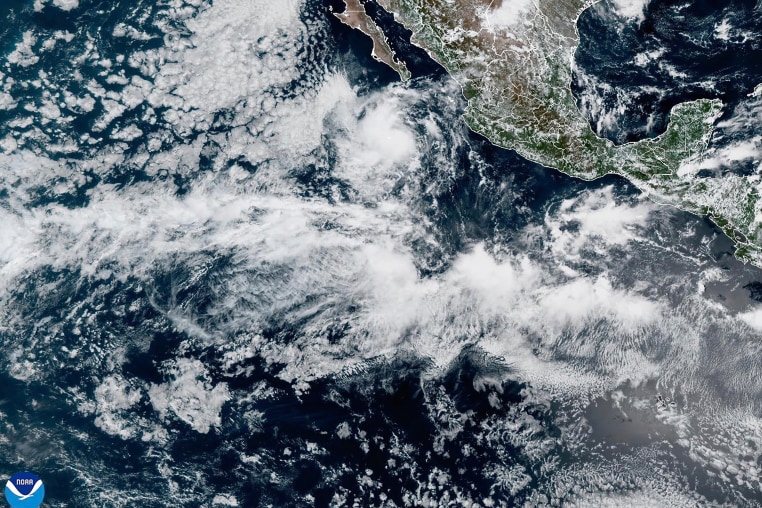Regional Earth System Modeling Advances Climate Resilience in the Great Lakes Region
Introduction
In response to increasing climate variability, researchers Pengfei Xue and Miraj B. Kayastha have developed innovative regional Earth system models aimed at enhancing the understanding and prediction of extreme weather and environmental changes. Their pioneering work has been recognized with the 2025 Bhakta Rath Research Award from Michigan Technological University (Michigan Tech).
Michigan Tech’s Leadership in Great Lakes Research
Michigan Tech has established itself as a leader in Great Lakes research. Professor Pengfei Xue and Ph.D. student Miraj B. Kayastha focus their research on the Great Lakes, a critical component of regional climate variability and prediction. Their advanced computational models adopt an interconnected, holistic approach to forecast extreme weather events and environmental changes.
About the Bhakta Rath Research Award
The Bhakta Rath Research Award, established in 2010, honors a Michigan Tech Ph.D. student and their faculty advisor for “exceptional scientific and technological research in anticipation of the future needs of the nation.”
Research Focus and Impact
Xue and Kayastha’s regional Earth system models extend beyond weather prediction to examine the future evolution of the Great Lakes regional system, emphasizing water levels and lake-effect snowstorms. Their models integrate state-of-the-art coupled representations of the Great Lakes, providing reliable and timely insights for scientists, policymakers, and stakeholders involved in:
- Infrastructure and transportation networks
- Drinking water supply
- Energy production
- Natural resource management
Recognition by Experts
- Jiali Wang, Principal Atmospheric and Earth Scientist at Argonne National Laboratory, praised the “cutting-edge modeling framework” and highlighted Kayastha’s dedication and innovation.
- Michael Notaro, Director of the Nelson Institute Center for Climatic Research, described Kayastha as “an extremely productive researcher and early-career leader” advancing understanding of future climate impacts on lake-effect snowstorms.
- Ayumi Fujisaki-Manome, Associate Research Scientist at the Cooperative Institute for Great Lakes Research, emphasized the novel and forefront nature of their regional climate studies.
Collaboration and Mentorship
Xue and Kayastha have collaborated for over five years, beginning when Kayastha joined Michigan Tech as a master’s student in 2019. Xue, a professor in the Department of Civil, Environmental, and Geospatial Engineering and Associate Director of the Great Lakes Research Center, provided expertise in regional Earth system modeling that attracted Kayastha to Michigan Tech.
Future Directions and Applications
After earning his Ph.D. in Civil Engineering, Kayastha continues his research as a postdoctoral associate at the Massachusetts Institute of Technology. His current work integrates regional climate projections with hydrological modeling and water management strategies to assist vulnerable communities in Morocco in adapting to water scarcity and changing rainfall patterns.
Research Insights and Sustainable Development Goals (SDGs)
Research Explanation
- Pengfei Xue: The research studies interactions among water, air, ice, land, and life across large regional Earth systems, focusing on the Laurentian Great Lakes. Advanced computer models combined with machine learning techniques enhance prediction accuracy for extreme events, environmental changes, and coastal hazards.
- Miraj Kayastha: The work focuses on future changes in Great Lakes water levels and lake-effect snowstorms using a three-dimensional coupled model. The research supports coastal communities by providing critical insights for climate resilience and policymaking.
Alignment with Sustainable Development Goals
The research directly contributes to multiple United Nations Sustainable Development Goals (SDGs), including:
- SDG 6: Clean Water and Sanitation – by improving understanding and management of freshwater resources in the Great Lakes region.
- SDG 9: Industry, Innovation, and Infrastructure – by supporting infrastructure planning and disaster mitigation through advanced modeling.
- SDG 11: Sustainable Cities and Communities – by aiding urban planning and resilience against climate impacts.
- SDG 13: Climate Action – by enhancing climate variability prediction and adaptation strategies.
- SDG 15: Life on Land – by promoting ecosystem sustainability in freshwater and coastal regions.
Meeting Future National Needs
“We are entering a time when climate variability, extreme weather and environmental change will increasingly challenge the resilience of our infrastructure, natural resources and communities — especially in freshwater and coastal regions. Our work in regional Earth system modeling helps us understand how these interconnected systems respond to both natural forces and human activities.”
– Pengfei Xue, 2025 Bhakta Rath Research Award Co-recipient
The research provides a scientific foundation and decision-support tools essential for sustainable development, resource security, and resilience, addressing critical challenges anticipated in the coming decades.
Broader Impact on Climate Science
“Our research contributes a significant advancement in projecting future conditions for the North American Great Lakes, offering critical insights for managing water resources and guiding long-term urban planning and climate resilience efforts.”
– Miraj B. Kayastha, 2025 Bhakta Rath Research Award Co-recipient
The regional Earth system modeling approach sets a new standard in hydroclimate modeling and is applicable to other large inland freshwater systems globally, such as Lake Baikal and Lake Victoria, facing similar climate-driven challenges.
Collaborative Research Partnerships
Kayastha’s graduate research involved collaboration with institutions including:
- Michigan Technological University
- Argonne National Laboratory
- Pacific Northwest National Laboratory
- NOAA
- Bangor University, U.K.
These partnerships integrate diverse expertise spanning modeling techniques, community engagement, and decision-making, fostering interdisciplinary innovation.
Mentorship and Professional Growth
Since 2019, Xue has mentored Kayastha, fostering his growth into an independent researcher. Their collaboration emphasizes the use of science and technology to address real-world challenges related to climate variability and environmental resilience. Both highlight the mutual learning experience and shared commitment to impactful research.
Acknowledgments
- Pengfei Xue acknowledges the collective efforts of research group members and collaborators.
- Miraj Kayastha expresses gratitude to Professor Xue, project collaborators, and his family for their support and encouragement.
About Michigan Technological University
Michigan Technological University, founded in 1885 in Houghton, is an R1 public research university with nearly 7,500 students from over 60 countries. Known for its strong return on investment, Michigan Tech offers more than 185 undergraduate and graduate programs across science, technology, engineering, computing, forestry, business, health professions, humanities, mathematics, social sciences, and the arts. The rural campus near Lake Superior provides year-round outdoor adventure opportunities.
1. Sustainable Development Goals (SDGs) Addressed or Connected
- SDG 6: Clean Water and Sanitation – The article discusses research focused on the Great Lakes, which are vital freshwater resources impacting drinking water supply and water management strategies.
- SDG 7: Affordable and Clean Energy – The research supports sustainable energy operations by providing climate projections that influence energy production.
- SDG 9: Industry, Innovation and Infrastructure – The development of advanced regional Earth system models and computational tools contributes to innovation and infrastructure resilience.
- SDG 11: Sustainable Cities and Communities – The research aids in urban planning, disaster mitigation, and building climate resilience in Great Lakes coastal communities.
- SDG 13: Climate Action – The core of the article is about understanding and predicting climate variability, extreme weather, and environmental change to support climate resilience and adaptation.
- SDG 15: Life on Land – The research addresses ecosystem sustainability and natural resource management related to the Great Lakes region.
2. Specific Targets Under Those SDGs Identified
- SDG 6 – Target 6.4: Substantially increase water-use efficiency across all sectors and ensure sustainable withdrawals to address water scarcity.
- SDG 7 – Target 7.2: Increase substantially the share of renewable energy in the global energy mix and improve energy efficiency.
- SDG 9 – Target 9.5: Enhance scientific research and upgrade the technological capabilities of industrial sectors, particularly in developing countries.
- SDG 11 – Target 11.5: Significantly reduce the number of deaths and the number of people affected by disasters, including water-related disasters.
- SDG 13 – Target 13.1: Strengthen resilience and adaptive capacity to climate-related hazards and natural disasters in all countries.
- SDG 15 – Target 15.1: Ensure the conservation, restoration, and sustainable use of terrestrial and inland freshwater ecosystems.
3. Indicators Mentioned or Implied to Measure Progress
- Water Levels in the Great Lakes: The article highlights modeling and prediction of water levels, which can be used as an indicator of freshwater resource status and variability (related to SDG 6.4 and SDG 15.1).
- Frequency and Intensity of Lake-Effect Snowstorms: The prediction of extreme weather events such as lake-effect snowstorms serves as an indicator of climate variability and resilience (related to SDG 13.1 and SDG 11.5).
- Integration of Climate Projections with Hydrological Modeling: This approach implies the use of indicators related to water scarcity and rainfall pattern changes, relevant for assessing adaptation strategies (SDG 6.4 and SDG 13.1).
- Use of Advanced Computational Models and Machine Learning: The development and application of these tools serve as indicators of innovation and technological advancement (SDG 9.5).
- Support for Infrastructure Planning and Disaster Mitigation: Indicators could include reduced disaster impacts and improved infrastructure resilience (SDG 11.5).
4. Table of SDGs, Targets, and Indicators
| SDGs | Targets | Indicators |
|---|---|---|
| SDG 6: Clean Water and Sanitation | 6.4: Increase water-use efficiency and ensure sustainable withdrawals | Water levels in the Great Lakes; hydrological modeling of water scarcity and rainfall patterns |
| SDG 7: Affordable and Clean Energy | 7.2: Increase share of renewable energy and improve energy efficiency | Support for sustainable energy operations informed by climate projections |
| SDG 9: Industry, Innovation and Infrastructure | 9.5: Enhance scientific research and technological capabilities | Development and application of advanced Earth system models and machine learning techniques |
| SDG 11: Sustainable Cities and Communities | 11.5: Reduce deaths and people affected by disasters | Prediction and mitigation of lake-effect snowstorms; infrastructure planning and disaster resilience |
| SDG 13: Climate Action | 13.1: Strengthen resilience and adaptive capacity to climate hazards | Modeling of extreme weather events; integration of climate projections with water management strategies |
| SDG 15: Life on Land | 15.1: Conservation and sustainable use of freshwater ecosystems | Monitoring and prediction of Great Lakes ecosystem sustainability and water resource management |
Source: mtu.edu







